Battlefield Communication
First World War combat degraded into an indecisive trench war stalemate in
no small part because communication difficulties made it difficult to
coordinate an attack. The war saw a great deal of innovation,
including communications innovations, and in part because of this,
successful attacks became possible. Signal Corps photos show some of
the technologies available during the war.
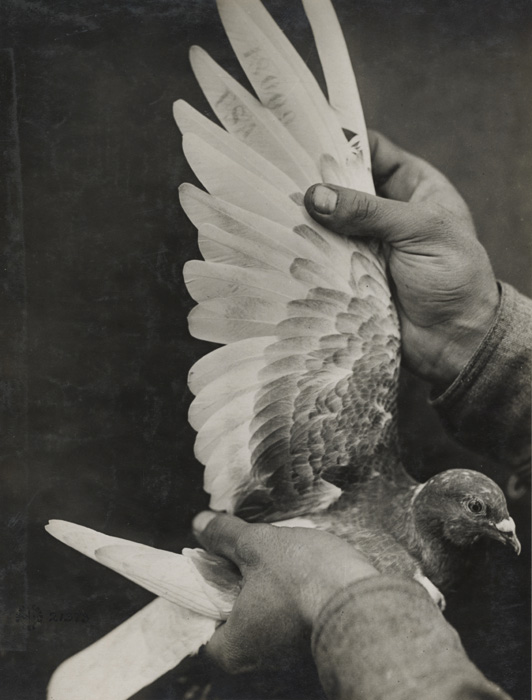
Carrier pigeon with identification number.
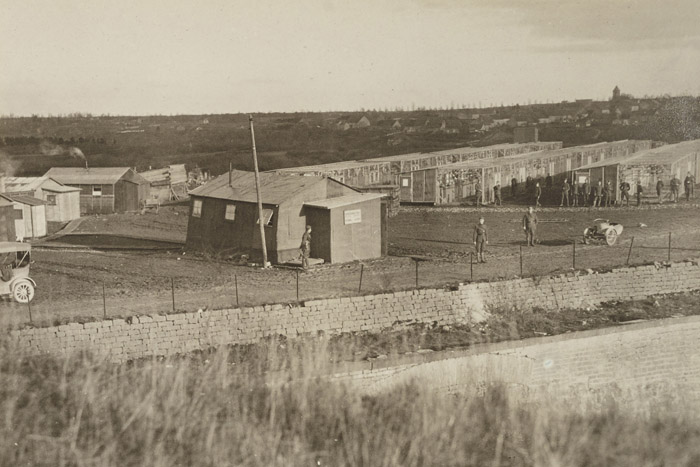
Pigeon farm at Langres
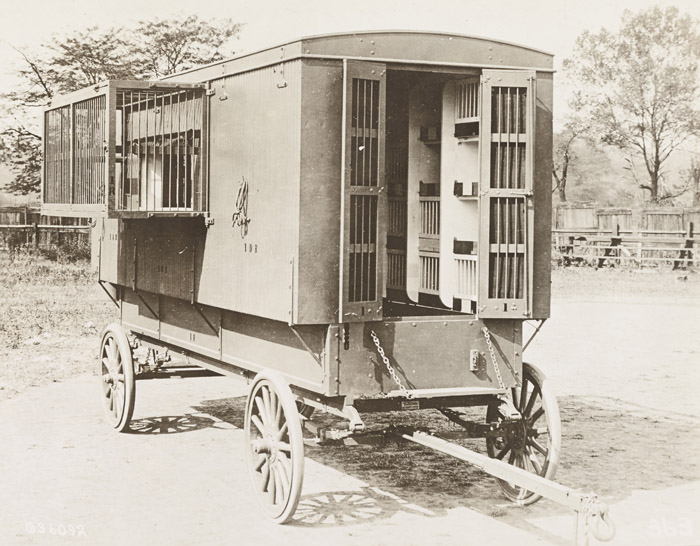
Carrier pigeon wagon
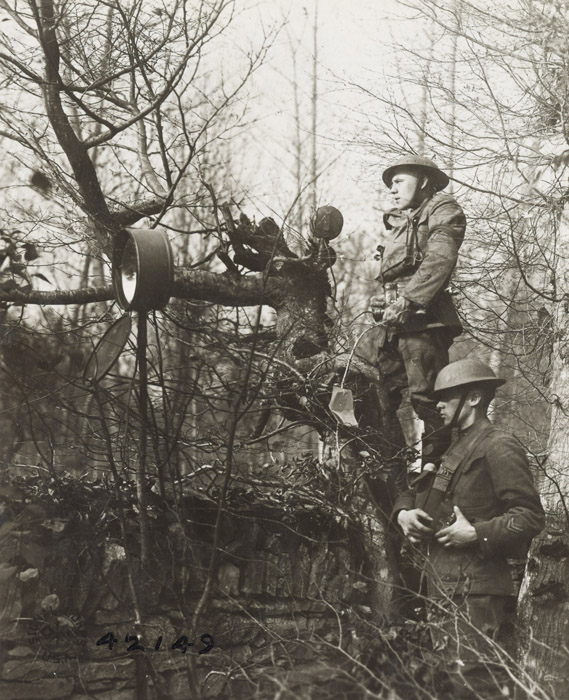
Visual relay station, where messages are relayed from front to rear when it
is impossible to establish direct communication. Small 14 cm lamp is
used to acknowledge forward when possible. Larger 24 cm lamp is used
to send on to rear. 2nd Corps Signal School, Chatillon sur Seine.
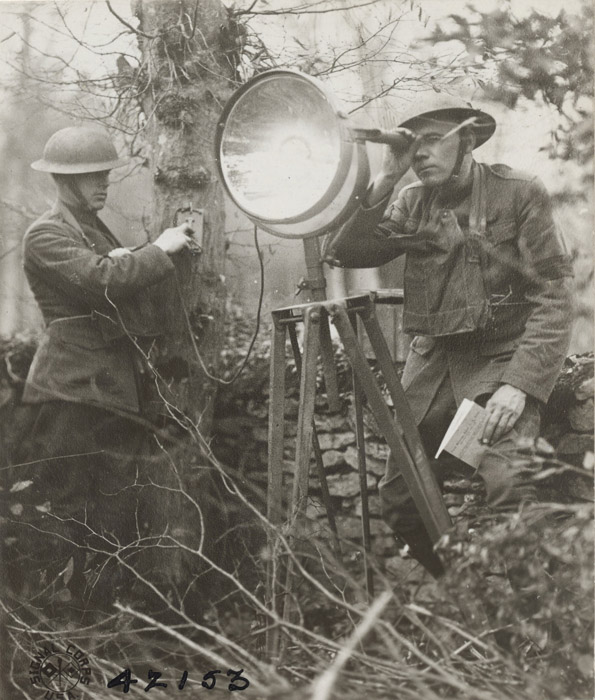
35cm French lamp used to send messages over long distances in rear such
as Brigade to Division. Power is taken from 16 volt Amp hour storage
battery. Its sending capacity is about 18 kilometers.
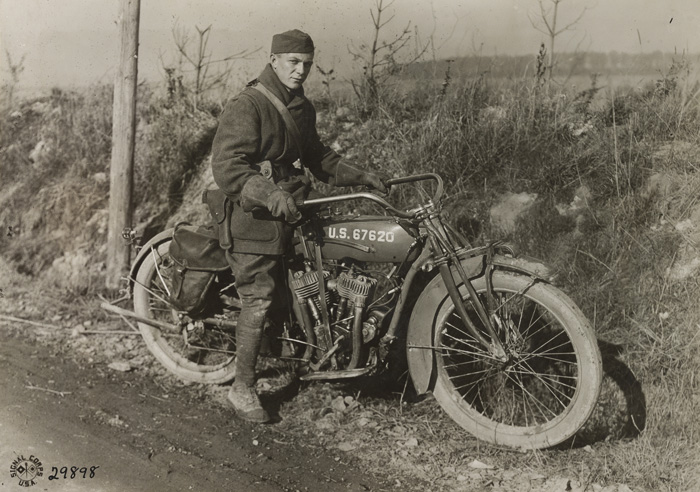
Dispatch rider from ammunition train to headquarters.
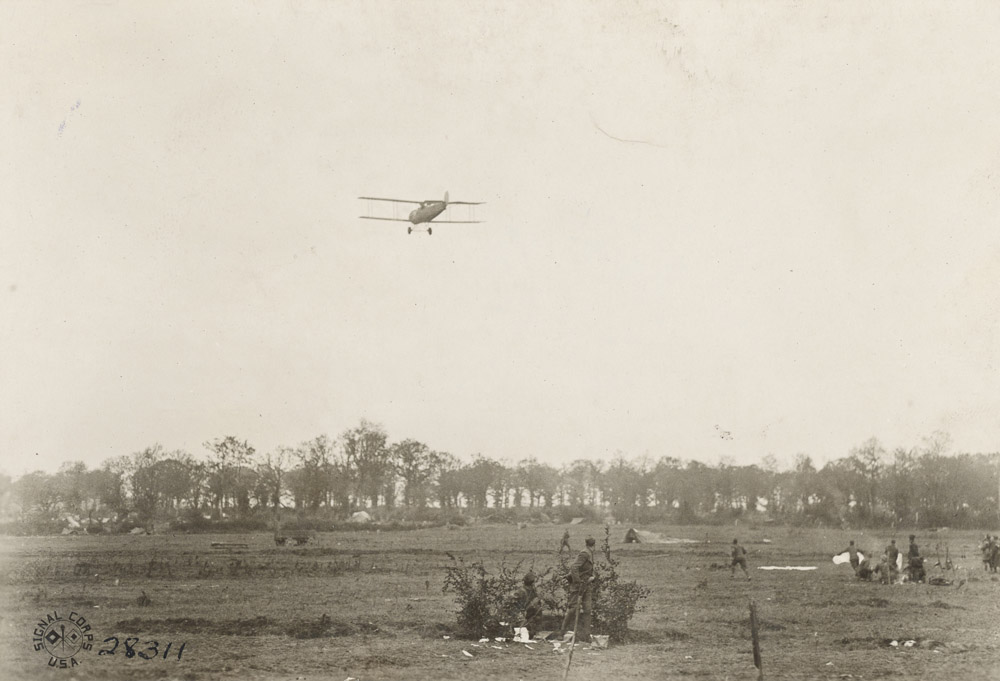
Observer back from front dropping message from the 5th Division commander,
Fayel Farm, meuse, France.
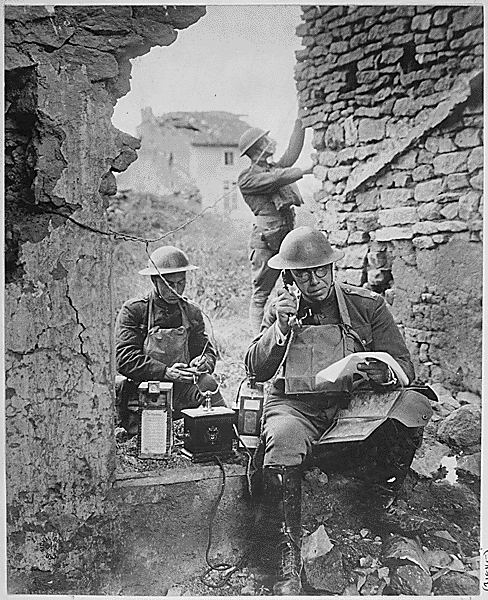
Lt Colonel Garrett
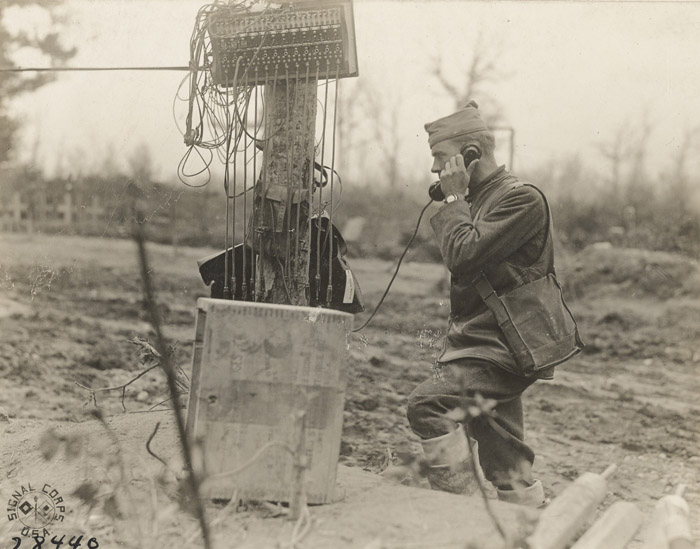
The cross roads in the Argonne Woods near Montfaucon, showing an important
switchboard placed there by the 112th field signal battalion, during an
advance through the woods. This board is a vital spot in the means of
communication. The lines connecting the regiments with division
headquarters and division headquarters with corps headquarters meet at this
point. During an emergency when all the men were out shooting trouble,
2nd Lt Edward E French of the 52nd telegraph battalion acted in the capacity
of operator. Headquarters, 32nd Division.
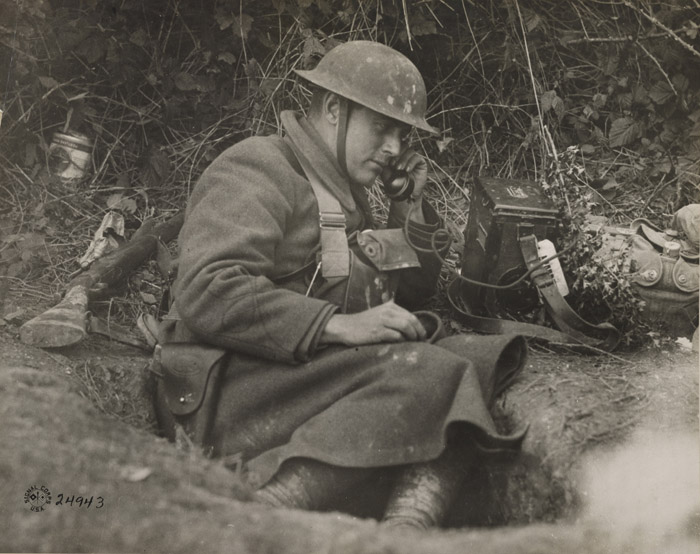
Liason lieutenant of field artillery receiving orders over the field
telephone from his Colonel, who is observing with the Infantrymen in the
first line. Sometimes the process is reversed, and the lieutenant
reports from the first line to a colonel stationed at headquarters.
39th Regt Inf, Nantollois.
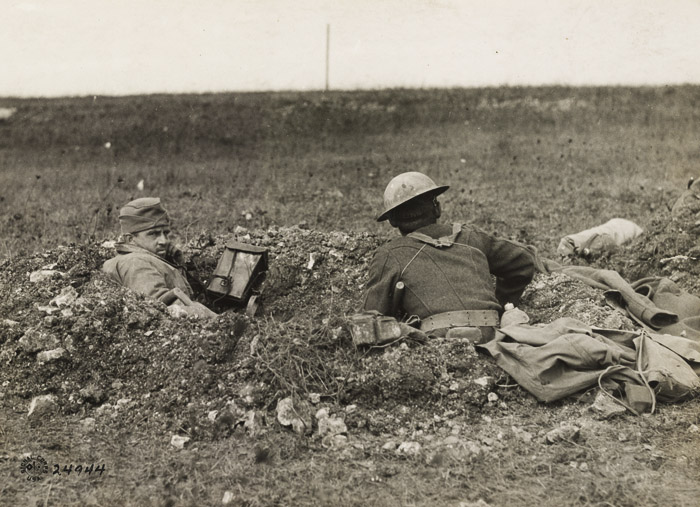
Field artillery liaison officer reporting the progress of the attack to his
headquarters over a field telephone.

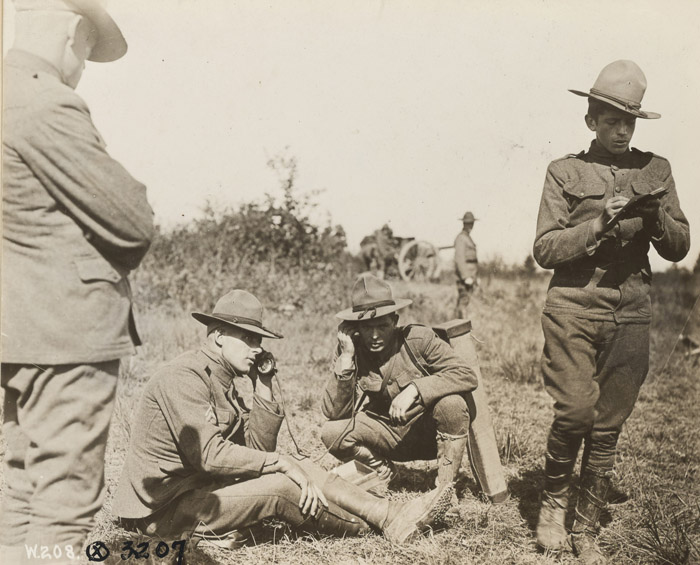
Telephone, US artillery
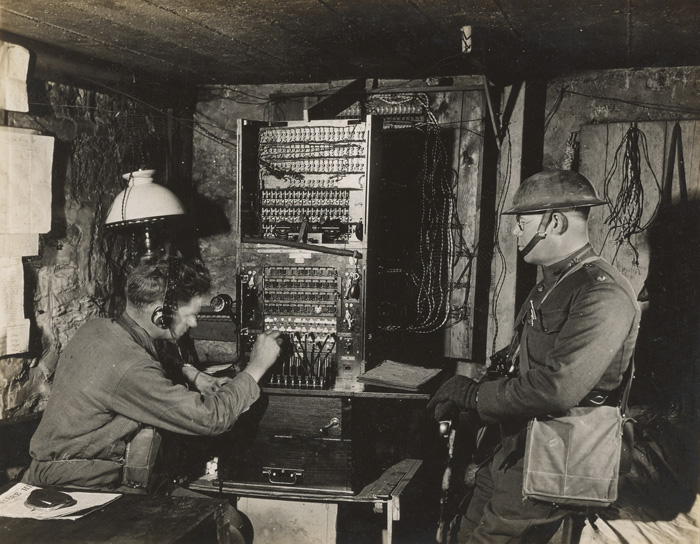
American soldier operating telephone switchboard in dugout just behind front
line trenches. Maj RD Garrett awaiting connection with divisional
headquarters. Montigny, France.
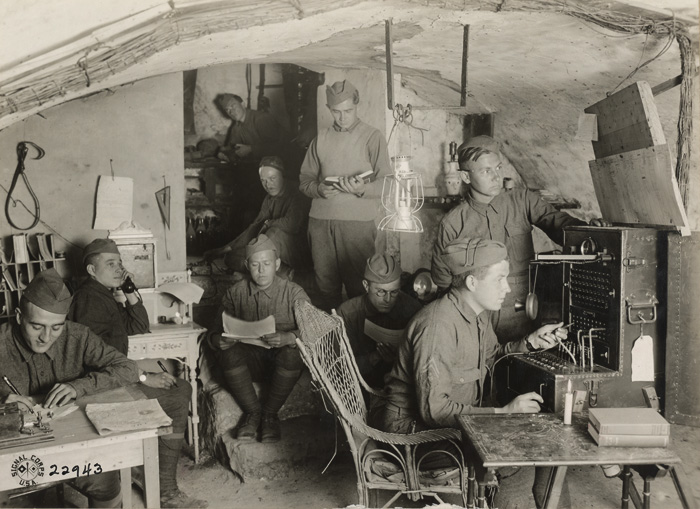
Signal Corps telephone and telegraph station in cellar of building in
Chateau Thierry.
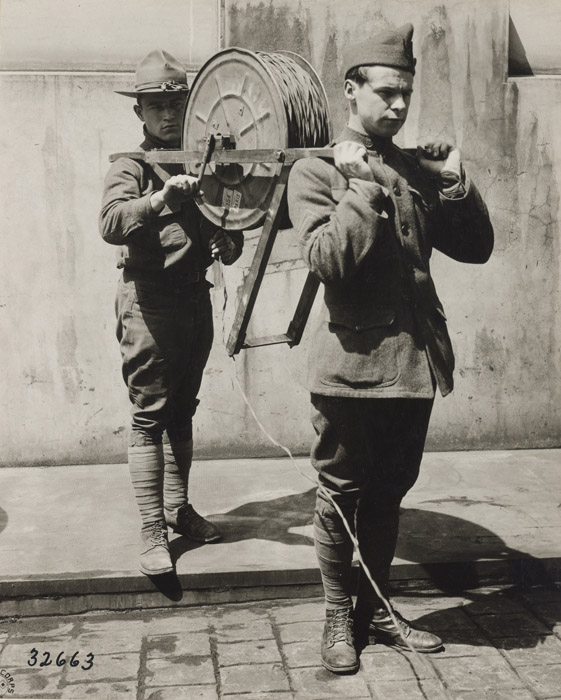
Reel carrier combined takeup and payout for French punched steel reel.
Size of carrier 12 x 48 inches. Reel 6 1/2 x 22 inches.
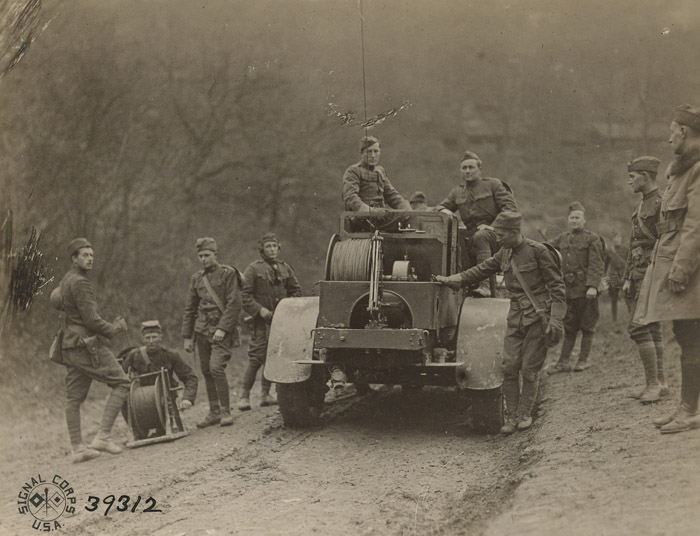
Control winch, reel unwinding telephone wire.
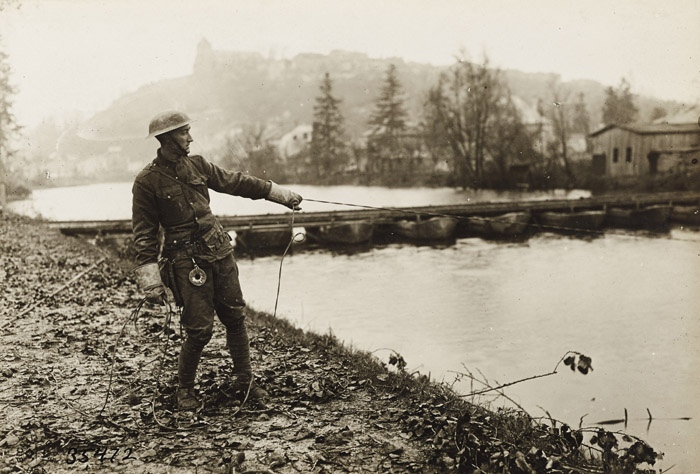
Stretching telephone wires across the Meuse River. Co B, 9th F.S.
Bn, Dun sur Meuse.
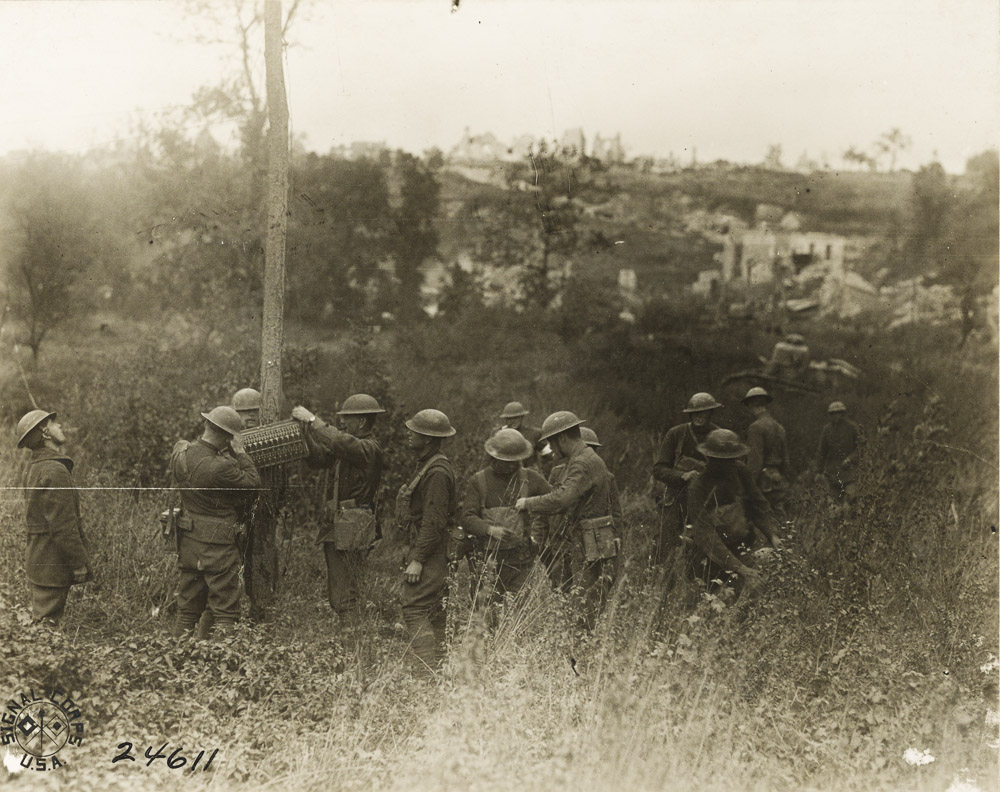
Establishing telephone communication between Division and Corps HQ.
322nd Field Signal Bn. 1st Army Corps, attached to 35th Div.
Cheppy.
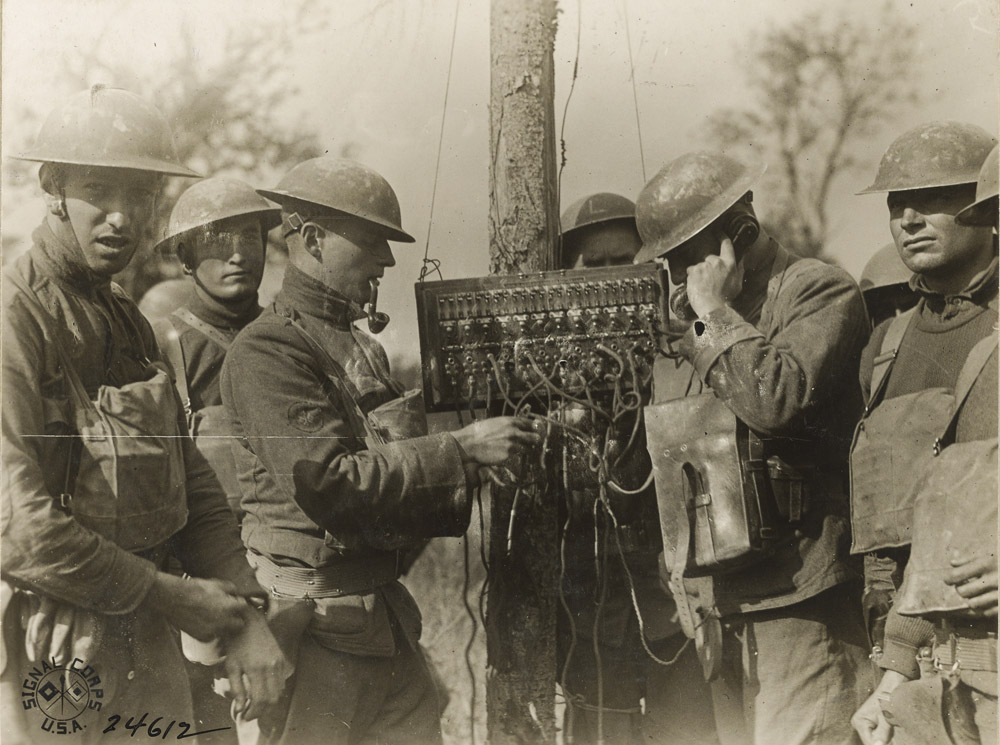
Pvt AV Knorp testing out the line. 322nd Field Signal Bn. 1st
Army Corps. Cheppy.
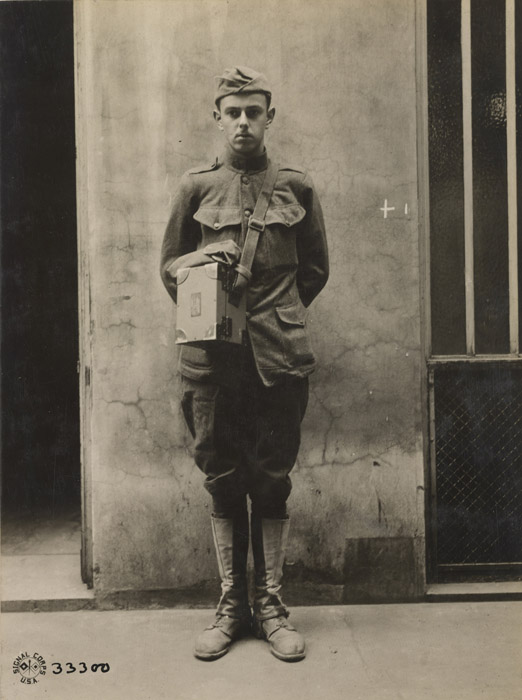
Buzzerphone, Type EE, (new).
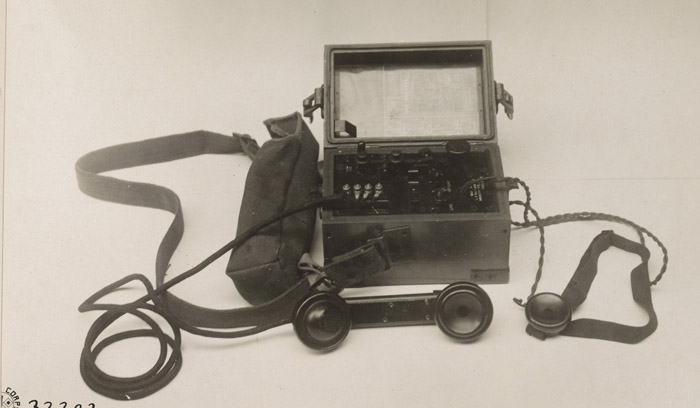
Buzzerphone, cover open.
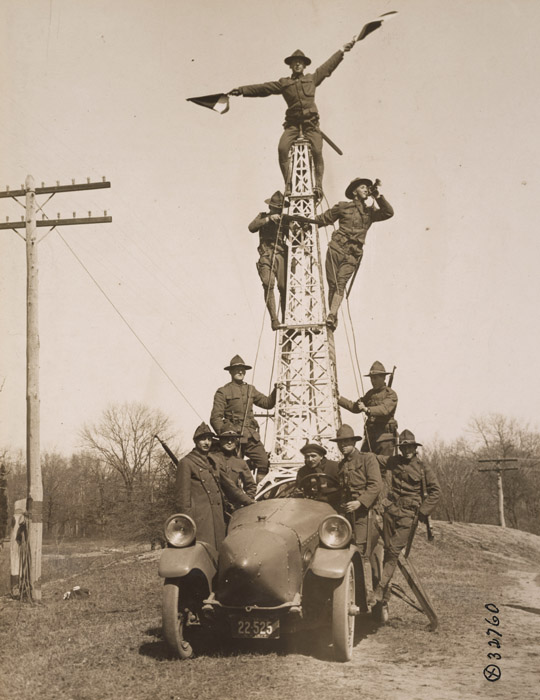
Wireless men of US Army. Members of the US Signal Corps in an armored
automobile with wireless and signal tower.
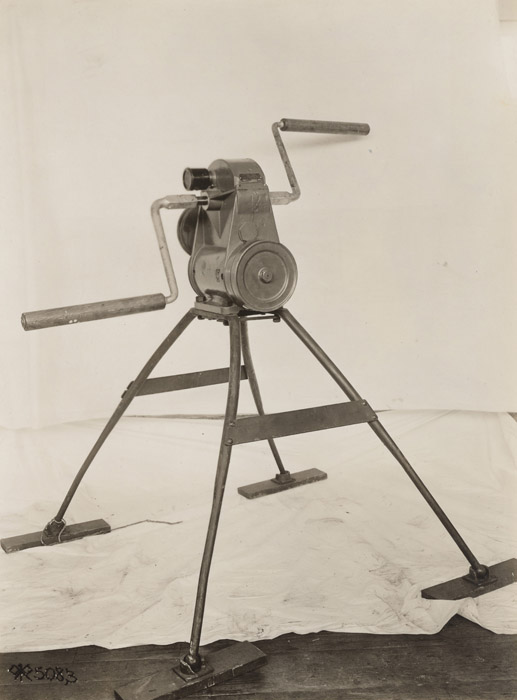
Radio apparatus. Hand generator for SCR - 49 set.
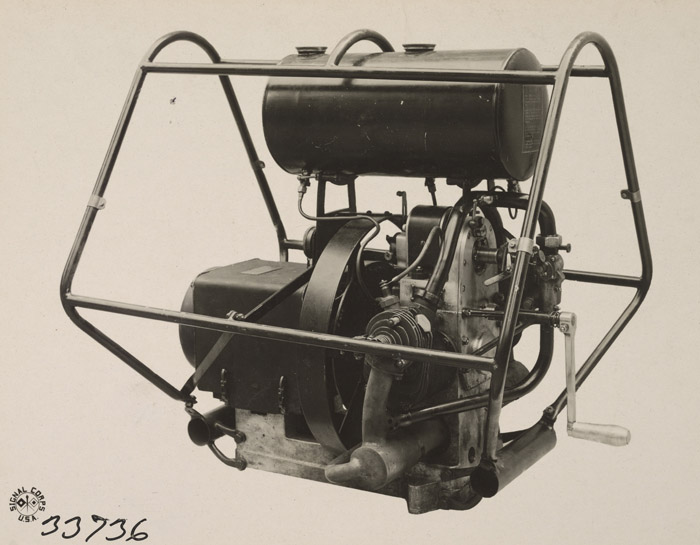
British charging unit (A.B.C. set)
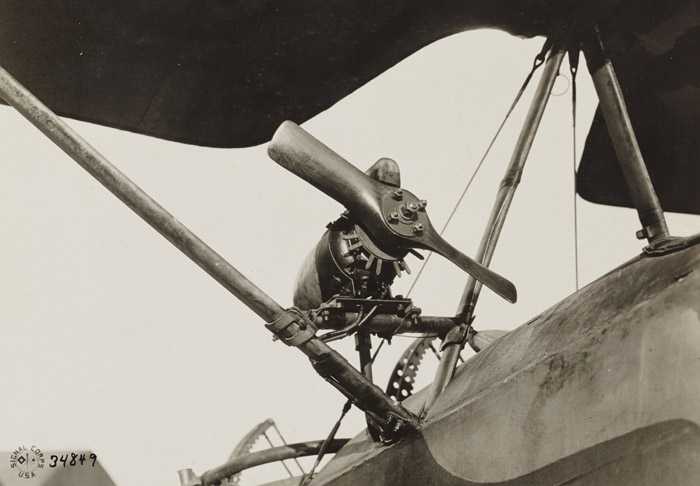
Radio division type "Y" set on strut. Electricity generator for
airplane radio.
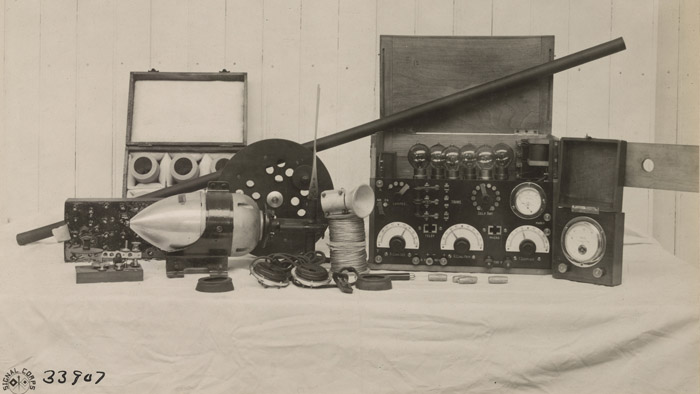
Radio set, type e-10 airplane wave meter.

Radio in airplane.
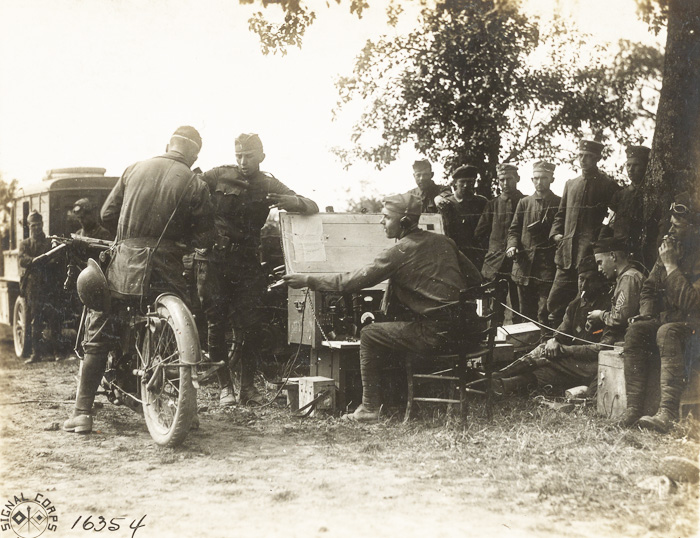
Field radio station hastily constructed by members of Co A, 101st Field
Signal Battalion (formerly 1st Field Signal Ban, Mass. NG) during the
advance of the Americans. Picardy Far, July 22, 1918.
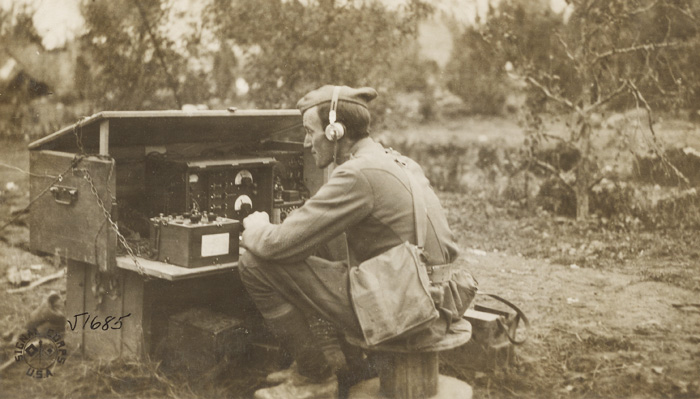
French radio and arc set used by American army.
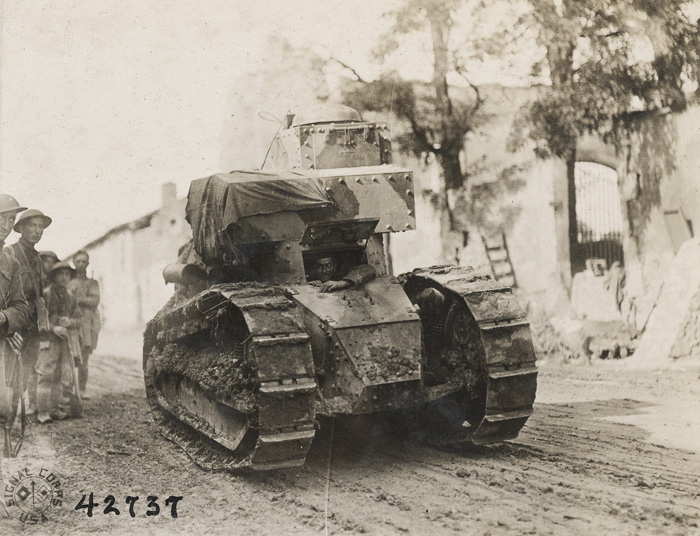
French petit tank on its way to chase Germans further back toward Metz.
78th Div, Limey.
Signals tank equipped with radio.
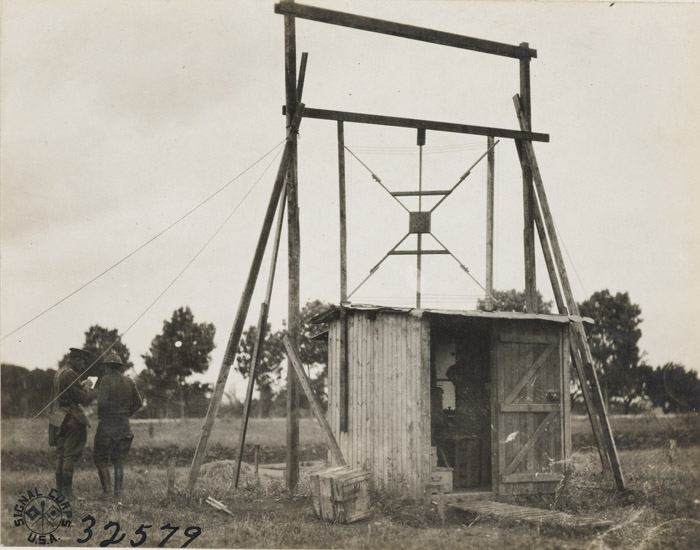
Aero ground gonio station No 82, established June 14, 1918 radion section
signal corps. Royaumeix, France. June 18, 1918
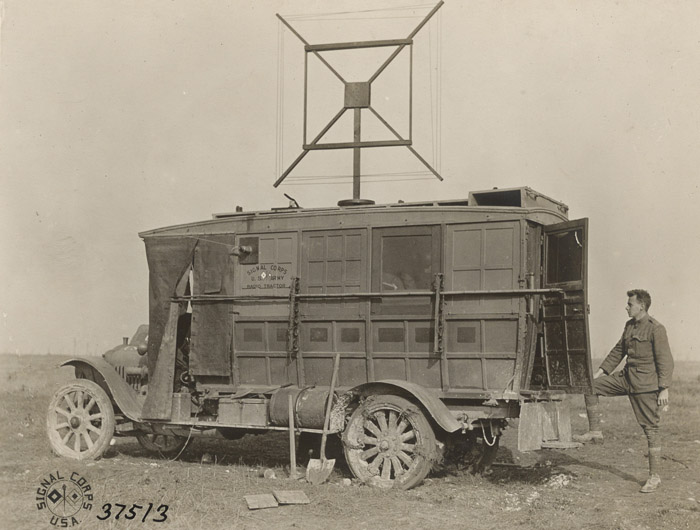
Radio intelligence station upon what for four years was No Man's Land.
Purpose of this mobile station is to intercept communications of
enemy. Aside from being equipped with a very powerful wireless set,
station can also be used for geniometric purposes. (Finding
locations of enemy radios.) Near Montfaucon.
































